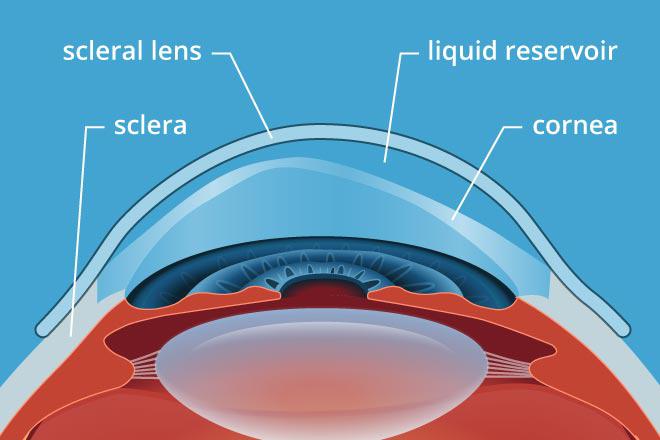
The degree to which the optical power changes during fitting is known as the “supplemental power” and is attributed to a combination of effects from shape change and tear film thickness. With this conformance the optical path through the lens is changed, consequently changing the focal length and power throughout the lens optic zone. Power changes occur as the surface of a lens undergoes relative changes in shape and thickness due to conformance with the cornea. Changes in the optical power of soft contact lenses during the fitting process have been reported by researchers for more than four decades, however, it is not yet possible to precisely predict the performance of clinical soft lens fitting. When a contact lens is placed on the eye, the effects of the eyelid interaction and the tears’ surface tension change the lens dimensions and therefore alter its predesigned refractive power. This does not alter our adherence to PLOS ONE policies on sharing data and materials.


All other authors declare no potential financial or non-financial competing interests including employment, consultancy, patents, products in development, or marketed products. AS, CEO of Eaglet Eye BV, and both IF and RS, the clinicians in Eaglet Eye BV, may use the figures in this manuscript to improve the performance of the Eye Surface Profiler (ESP). The specific roles of these authors are articulated in the ‘author contributions’ section.Ĭompeting interests: The authors have read the journal's policy and the authors of this manuscript have the following competing interests: AA was a paid employee of an Innovate UK Knowledge Transfer Partnership Programme Grant till November 2017. The funder provided support in the form of salaries but did not have any additional role in the study design, data collection and analysis, decision to publish, or preparation of the manuscript. This is an open access article distributed under the terms of the Creative Commons Attribution License, which permits unrestricted use, distribution, and reproduction in any medium, provided the original author and source are credited.ĭata Availability: All relevant data are within the manuscript and its Supporting Information files.įunding: This work was partially funded by an Innovate UK Knowledge Transfer Partnership programme grant 009521/UVP016 awarded to AE. Received: DecemAccepted: ApPublished: May 14, 2019Ĭopyright: © 2019 Abass et al. PLoS ONE 14(5):Įditor: Craig Boote, Cardiff University, UNITED KINGDOM (2019) Simulated optical performance of soft contact lenses on the eye. The effect from lens total diameter for spherical lenses was less substantial than that for toric lenses.Ĭitation: Abass A, Stuart S, Lopes BT, Zhou D, Geraghty B, Wu R, et al. Contact lens base curve selection affected the assessed effective power change for both spherical and toric lenses. EPC trends, along with minimum and maximum power, generally increased negatively as nominal lens prescription increased positively.

Similarly, the toric lenses showed a maximum of +1.501 ± 0.338 D (Average Eye), and a minimum of -3.514 ± 0.731 D (Steep Eye). The spherical lenses showed a maximum effective power change of +1.046 ± 0.338 D (Average Eye), and a minimum of -3.278 ± 0.731 D (Steep Eye). EPC assessment was between +0.25 D and -0.5 D for most lenses, however, lenses with prescriptions from +10 D to +20 D incurred EPC outside this range. Spherical lenses demonstrated similar behaviour, however with some positive EPC over the power range from -20 D to -10 D for spherical power (SPH) lenses. Effective power changes (EPC) were affected negatively for all toric simulated lenses with power varying from -20 D to +20 D.


 0 kommentar(er)
0 kommentar(er)
